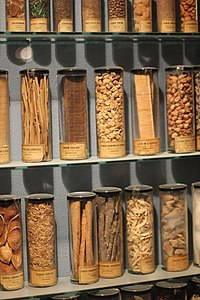
Photo from wikipedia
Abstract Chronic urticaria (CU) is a pathologic condition marked by the emergence of wheals, angioedema, or both for more than six weeks. The improper activation and degranulation of mast cells… Click to show full abstract
Abstract Chronic urticaria (CU) is a pathologic condition marked by the emergence of wheals, angioedema, or both for more than six weeks. The improper activation and degranulation of mast cells is the triggering event, which results in the production of various mediators such as histamine, leukotrienes, PAF, chemokines, and cytokines. Antihistamines are currently the most common pharmacological treatment for urticaria, but corticosteroids and monoclonal antibodies can also be employed. Patients who have been taking antihistamines for a long time are often looking for alternatives. Whole plants, portions of plants, or single extracted active compounds are all used in phytomedicine. Plant elements are frequently combined to create formulations that can be utilized to treat a variety of pathological disorders. Anti-inflammatory and/or anti-allergic properties are found in several herbs regularly used in herbal formulations. Antioxidant properties are also present in some of the constituents. Exogenous antioxidants have been shown to improve the progression of autoimmune disorders in numerous studies. The aim of this review is to identify the most common herbs used to treat chronic urticaria, and to characterize their efficacy, mechanisms of action, and risk/benefit ratio in comparison to western treatment, and also to find less often used formulations and assess their therapeutic efficacy, safety profile, and potential for wider use.
Journal Title: Natural Product Research
Year Published: 2022
Link to full text (if available)
Share on Social Media: Sign Up to like & get
recommendations!